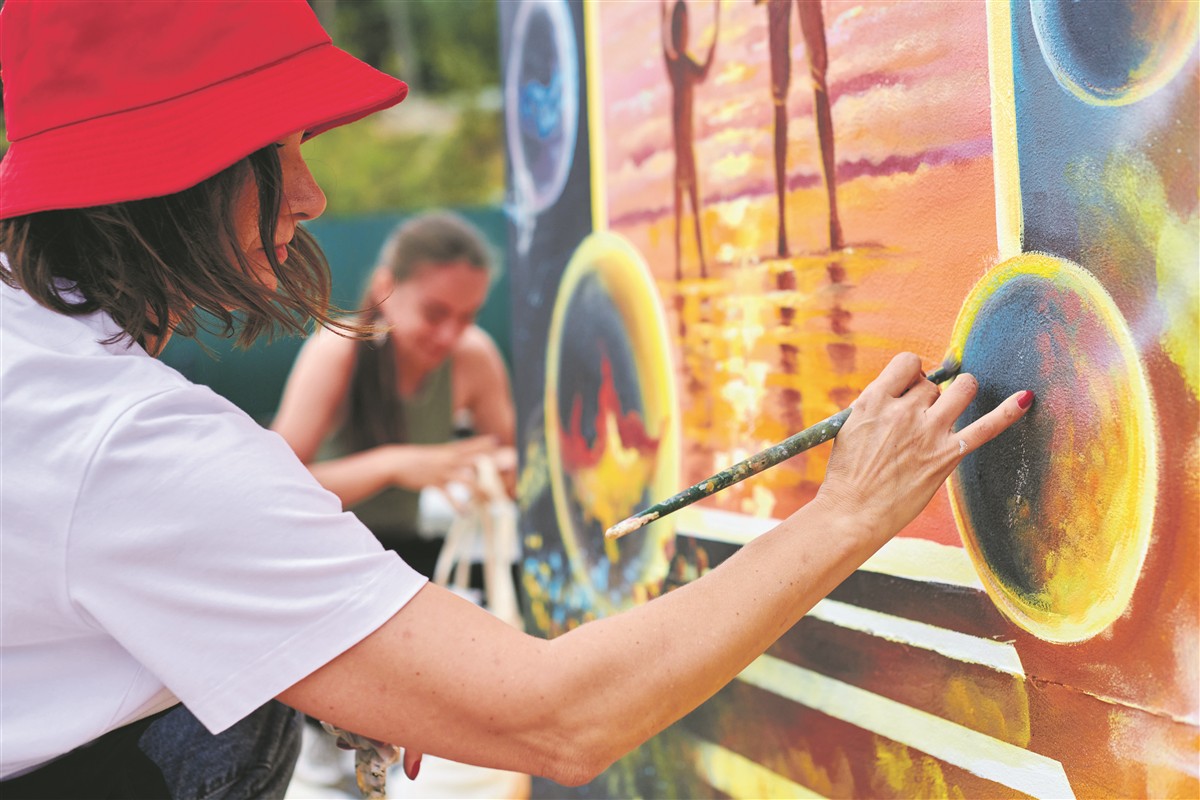
Altea - Between history, art and Mediterranean light
Altea - Between history, art and Mediterranean light Part of the new CBM series „My village“ - a search for clues in places that are more

ADVERTISEMENT

Not all art hangs in museums - but some museums tell art history themselves.
In this issue of HOTSPOT, we take you to two places in Spain that could hardly be more different, yet have one thing in common: their cultural appeal. In Zaragoza, we follow in the footsteps of Francisco de Goya, whose work and influence can still be seen in the city today. And in Bilbao, we visit the spectacular Guggenheim Museum, which has become a global art event not only with its collection but also with its architecture.
Two cities, two artistic worlds - both absolutely worth a visit.
Guggenheim Museum Bilbao: Where architecture becomes art
With its sculptural titanium façade, its organic design language and internationally renowned exhibitions, the Guggenheim Museum Bilbao has achieved far more than just a new cultural address: It has redefined the identity of an entire city.
Today, it is one of the most important museums of modern and contemporary art in the world - and a must-see for anyone who sees art and architecture as a living dialogue.
Designed by star architect Frank O. Gehry and opened in 1997, the building itself is considered a masterpiece of deconstructivism. The curved titanium panels, transparent gallery elements and the integration into the banks of the Nervión River create a sculptural presence that reinterprets architecture - as a space for experience rather than a static object. The flowing lines pick up on movement, surroundings and light and challenge classic architectural concepts.
Inside, an impressive collection of international contemporary art from the 20th and 21st centuries unfolds - with works by Louise Bourgeois, Jenny Holzer, Jeff Koons, Mark Rothko, Anselm Kiefer and Richard Serra. The latter is permanently represented with the monumental installation „THE MATTER OF TIME“ - a spatial sculpture made of weathered steel that visitors can walk through and physically experience space, movement and time.
The outdoor area is also part of the overall experience: the giant spider Maman by Louise Bourgeois or the flower-adorned dog Puppy by Jeff Koons have long since become cultural landmarks of Bilbao - photographed, discussed and known worldwide.
But the Guggenheim is more than just a place of art. It is seen as a catalyst for urban change - a symbol of the so-called „Bilbao effect“. It has enabled the city to transform itself from an industrial centre into an innovative cultural metropolis. To this day, urban planners, architectural firms and cultural politicians around the world point to this example, which shows how visionary architecture and courageous investment in culture can have an impact far beyond the art world.
In Goya's footsteps in Zaragoza
Zaragoza, located in the heart of Aragon, impressively combines past and present.
As the capital of the region, it combines Moorish heritage, Baroque splendour and contemporary culture - and thus offers a fascinating setting in which to rediscover the life and work of Francisco de Goya.
The city on the Ebro impresses with its striking buildings: the mighty Basílica del Pilar with its domes characterises the cityscape, while the Moorish-influenced Aljafería Palace bears witness to a multicultural past. In between, Art Nouveau façades and modern architecture invite you to take a stroll through different eras.
But Zaragoza is not only architecturally exciting - it is also inextricably linked with the name of Goya. His career began here: as a young artist, he designed the ceiling frescoes of the Regina Martyrum side dome in the Basílica del Pilar.
These works in the Rococo style already show his technical skill and his special signature - an exciting contrast to his later, expressive and often dark works.
If you want to delve deeper, visit the Museo Goya - Colección Ibercaja, which is considered the most important Goya collection in the city. In addition to paintings, you will also find his famous series of prints: Los Caprichos, Los Desastres de la Guerra and Los Disparates - critical, often ruthlessly honest pictorial worlds that reveal Goya's view of society, politics and humanity.
Goya's presence in the city is complemented by the Museo de Zaragoza, which exhibits works from his early creative period in particular - religious and allegorical motifs that allow conclusions to be drawn about his artistic development.
A special destination for Goya enthusiasts lies just outside the city: Fuendetodos, around 45 kilometres south of Zaragoza, is Goya's birthplace. The faithfully reconstructed house where he was born and the adjoining museum offer insights into the artist's printing techniques and etchings - a quiet but impressive place for anyone who wants to take a closer look at Goya the man.
A tour of Zaragoza is therefore much more than just an art-historical walk. It is a journey to the beginnings of an artist who pushed the boundaries of painting and left his mark for centuries - and whose influence can still be felt here, between baroque churches, modern city life and deeply rooted history.

Altea - Between history, art and Mediterranean light Part of the new CBM series „My village“ - a search for clues in places that are more

Culture on all stages: Auditoriums & open-air arenas Art, music and theatre - where almost every venue on the Costa Blanca

Clear the stage for art and culture Where studios open doors, sound spaces grow and art permeates everyday life - the Kulturküste